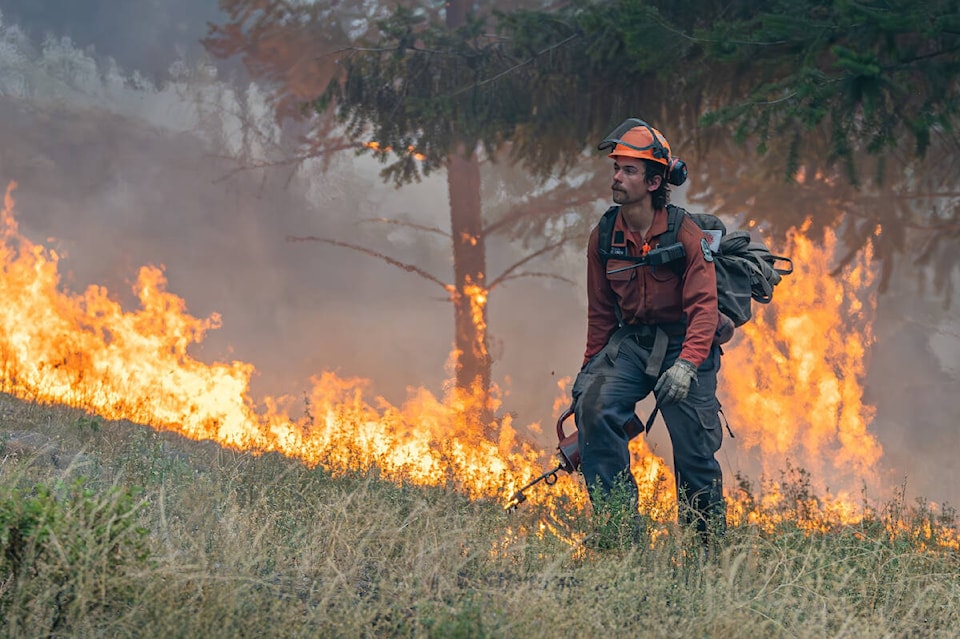The BC Wildfire Service has received a tripling of interest in firefighting positions ahead of what is expected to be another difficult season, but the surge in applications doesn’t mean it will be hiring more people than in past years.
Fire Information Officer Forrest Tower said they’ve had over 2,000 people apply for a wildfire fighting role this year, up from an average of 500 to 800 applicants in past years.
An increase in interest is normal after a bad wildfire season, Tower said, but he added that a large part of this year’s unprecedented jump is likely a result of BC Wildfire extending their application deadline from December to March for the first time. The service also made a couple other small tweaks to the process this year to make it easier, including removing the driver’s licence requirement.
Despite their push to increase recruitment, though, BC Wildfire isn’t actually looking to up its number of firefighting positions.
Tower said of the 2,000-plus applicants, they’ll end up hiring about 200 to join their existing firefighting crews. In total, around 1,300 people will be available to battle fires on the ground this season, a number that Tower said has increased slowly over the years, but remained steady for the most part.
When wildfires worsen, BC Wildfire depends on contract firefighting and importing workers from other provinces and countries to pad out its resources. In 2023, for instance, BC Wildfire brought on about 1,100 contract workers from within the province and another 1,750 personnel from various parts of Canada, the Canadian Armed Forces, the U.S., Australia, New Zealand, Mexico, Brazil, Costa Rica and South Africa.
“So our surge capacity is quite large, but it is dependent on those outside resources,” Tower said. “It works well right now. I think where there can be problems is just if everybody is asking for resources.”
Last year, when wildfires burned a record 18.4 million hectares across Canada, they were stretched thin. Multiple provinces needed help at once and B.C. had to rely more heavily on international help. Tower said they got lucky that California had a relatively tame season and wasn’t also drawing on outside aid.
He said the resource sharing is still working for now, but that as wildfire seasons get longer and more severe there may be the need to up their numbers.
However, Tower noted, more is not necessarily better. When wildfires get especially powerful, he said it isn’t always safe or very effective to send people in on the ground. In those instances, having more crew members wouldn’t make a huge difference.
What is vital, Tower said, is focusing on preventative measures like prescribed burns to remove excess fuel and FireSmart techniques to protect homes and communities.
Across B.C., 117 wildfires are burning as of April 24. In its latest situation report, BC Wildfire said long-range forecasts indicate it is likely to be an active spring wildfire season.
READ ALSO: ‘Trees going up like Roman candles’ as fire season starts early in B.C., Alberta
READ ALSO: Drought, heat raise risk of repeat of last summer’s record-breaking wildfires
READ ALSO: How best to evacuate B.C. communities from wildfires centre of unique study
